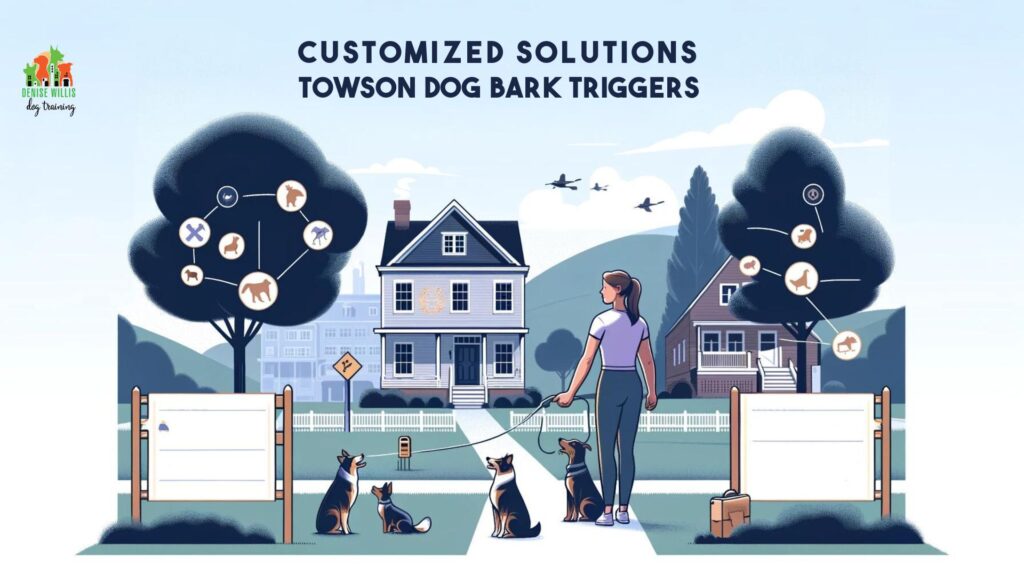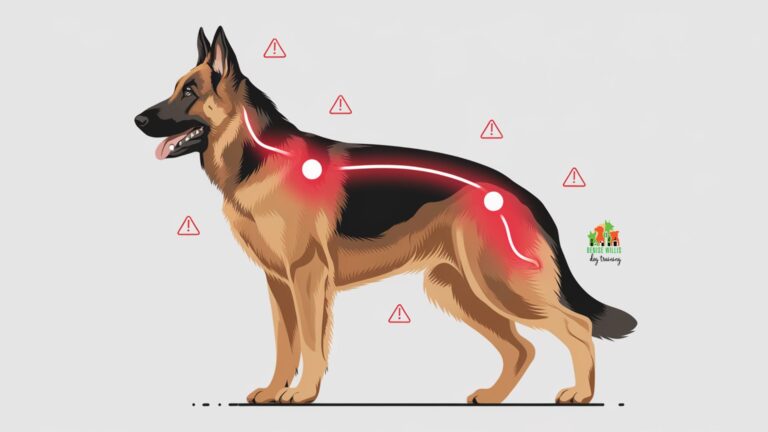Dog Barking Training in Baltimore: Effective Solutions for Urban Pet Owners
📍 Service Area Notice: DW Dog Training provides in-person training services exclusively in the Greater Baltimore area. While our blog content is designed to help dog owners internationally, our hands-on training services are locally focused. For readers outside our service area, we hope you find value in our articles and welcome you to reach out with questions!
As a dog parent and trainer in Baltimore, I understand the struggle of living with a vocal canine companion. While some barking is perfectly normal dog behavior, excessive or nuisance barking can disrupt households, upset neighbors, and strain the relationship between pets and their people.
With this in mind, I’ll cover proactive solutions Baltimore dog owners can implement to curb frequent barking and restore peace. We’ll look at common triggers behind nuisance barking as well as positive, ethical training approaches to change this behavior. My goal is to equip you with practical techniques while also letting you know that professional help is available if needed.
Why Dogs Bark Excessively
Before diving into solutions, it helps to understand some of the science behind nuisance barking. As pack animals, dogs often sound alarms in response to unusual happenings in their territory. They also vocalize when excited, anxious, or feeling frustrated by barriers (like windows or fences keeping them from stimuli).
While alarm and excitement barking stems from natural canine instincts, those instincts become problematic in an urban environment like Baltimore. With frequent unknown passersby, wildlife roaming around, vehicle noises, and general ambient stimulation, dogs can end up habitually barking 30+ times per day!
From their perspective, they’re just doing their job alerting to unusual activity and communicating desires or intrusions. But from a human perspective, the barrage of noise can be maddening. Additionally, excessive vocalization suggests anxiety, fear, or compulsion issues frequently plague your pup. Getting the barking under control improves life for all parties.
Table 1: Common Bark Triggers and Recommended Training Techniques
| Bark Trigger | Training Technique Recommendations |
|---|---|
| Passersby | Desensitization starting at long distances using high-value food rewards |
| Noises (sirens, trucks) | Calming background noise, teach “quiet” cue, reinforce quiet moments |
| Wildlife | Limit outdoor access at peak squirrel/cat times, redirect to toys |
| Guests at door | Reinforce sitting quietly to earn door opening, desensitize to knocking sounds |
| Departure cues | Avoid fanfare exits, provide food puzzles when leaving |
Common Bark Triggers
In order to curb excessive barking, pinpointing what situations typically precede it can be helpful. Some of the most common nuisance bark triggers for Baltimore dogs include:
- Unfamiliar passersby near yards/homes
- Noises like sirens, trucks, construction sounds
- Wildlife triggers like squirrels or stray cats in the yard
- Guests or unfamiliar maintenance workers entering the home
- Owners grabbing keys, putting on shoes, or giving other “leaving” cues
- Physical barriers like windows/fences keeping them from stimuli
- Lack of exercise/boredom
Keep these common triggers in mind as you observe your vocal dog’s habits. This gives you insights into patterns prompting the unwanted behavior. Once aware of specific triggers, owners can better avoid or manage them while also training replacement behaviors.

Effective Training Techniques to Try
The key to curbing excessive barking is to make nuisances no longer stimulating to dogs and teach them calm, quiet replacement behaviors instead. Professional Baltimore dog trainers use techniques based on animal learning theory to accomplish these goals gently and ethically. Some highly effective approaches you can try at home include:
Desensitization for Common Triggers
The concept is to gradually re-expose dogs to their trigger stimuli in a controlled, low-intensity way that prevents them from reacting. Over time as they remain below the barking threshold, their reactivity decreases through a process called “counterconditioning”.
- Example: Have a friend walk back and forth on the sidewalk while you reward your dog with high-value treats for staying under a threshold. Keep sessions short and make them easier if needed. Over multiple reps, your pup starts to feel indifferent vs alarmed when people pass by.
Teach “Quiet” Behavioral Cue
Choose a word like “quiet” or “enough” to use as a behavioral cue. When your pooch barks, calmly issue the cue. The moment they pause to breathe, praise and give a treat. Repeat the cycle to reinforce quiet moments. In time, your dog associates the cue with the rewards that follow brief silence.
Redirect Barking to Alternative Behaviors
In the moment you observe your dog poised to bark excessively, quickly redirect their energy towards an incompatible settled behavior. Great redirect options include fetch, trick routines, chew toys, or placing bed/crate. Over time, your dog chooses these calmer responses themselves.
Reinforce Desired Responses
When your dog voluntarily chooses not to bark during normally stimulating trigger moments, make sure to take note and provide enthusiastic praise and treats immediately. These “captures” help reinforce the decision to abstain from barking.
Set Up the Environment Proactively
Between training sessions, set your vocal dog up for success by managing the stimuli intensity around them:
- Restrict access to highly stimulating areas like windows or yard fence lines
- Play ambient calming music to help block outside noises
- Take them for daily aerobic exercise and provide interactive puzzles
- Avoid unpredictability and adhere to consistent routines
As you determine your dog’s unique bark triggers and start actively reconditioning their responses, you’ll notice more periods of calmness return to the household.
Table 2: Comparing Professional Dog Training Approaches
| DW Dog Training | Big Box Group Trainers |
|---|---|
| Customized training plans based on each dog’s unique needs | Pre-set training curriculum making dogs fit the program |
| Addresses root cause of unwanted behaviors | Treats surface-level symptoms only |
| Uses only effective reinforcement methods | May use punishment/adversives in some programs |
| Ongoing support after formal sessions end | Training typically ends after preset classes finish |
What If My Attempts Don’t Resolve the Barking?
While the above techniques are extremely effective for many dogs, some may require additional tailored help depending on variables like genetics, early life experiences, or the severity of their compulsivity.
The key is being committed to consistency with the training plan over weeks and months rather than days. If you feel your attempts aren’t making a noticeable dent, I highly recommend connecting with a professional Baltimore dog trainer or veterinary behaviorist to take a closer look.
Key Takeaways
- Excessive barking is a common issue that can disrupt households and upset neighbors
- Understanding common bark triggers helps owners address the root cause
- Positive training techniques like desensitization and redirection work to curb frequent barking
- Change takes consistency over weeks/months based on each dog’s unique traits
- If DIY training attempts fall short, enlist certified professionals for extra help
- DW Dog Training specializes in customized bark reconditioning programs using dog-friendly methods
- We guarantee results, standing behind our expertise even for intense cases
- Reach out anytime if your Baltimore dog needs personalized barking training
The main points to remember are that excessive barking has multiple remedies, but finding the right approach tailored specifically to your pup’s needs is key. Stay diligent in managing triggers and employing positive training methods. And, don’t hesitate to enlist professional support if you find your dog’s nuisance barking isn’t sufficiently resolving using DIY techniques alone within a few dedicated months. Specialized behaviorists like our team at DW Dog Training combine scientifically sound techniques with a customized view of each dog as an individual to curb frequent barking for good.
DW Dog Training: Helping Baltimore Dogs Find Their Voices
Here at DW Dog Training, we specialize in curbing excessive barking through customized training programs based on animal learning science. Head trainer Denise Willis, CPDT-KA, PMCT founded the school over 20 years ago to help Baltimore dog owners resolve frustrating behavioral issues using only the most ethical, dog-friendly methods.
We take a tailored consultation approach rather than a one-size fits all program. Our goal is to uncover the specific motivation behind your individual dog’s nuisance barking and recondition their emotional response using techniques like:
- Desensitization Protocols
- Reinforcement of Alternative Calm Behaviors
- Clear Communication Training
- Environmental Management Guidance
Additionally, we empower clients with the knowledge to continue building on training foundations once sessions conclude. You’ll fully understand the methodology behind the changes occurring.
For over 800 local clients, our customized bark reconditioning programs have translated to:
- Dogs that bark significantly less overall
- Pups no longer barking when home alone
- Minimal reactivity to passersby, noises, guests
- Better family harmony and community relations
- And resilient human-animal bonds
We’d love to help your vocal Baltimore dog find their voice appropriately. Reach out anytime to learn more about our bark reconditioning training process or schedule a tailored evaluation. We hope this guide has equipped Baltimore pet parents with more clarity on resolving nuisance barking situations. Just remember change takes patience as dogs form new associations. Our professionals enthusiastically assist clients who need more personalized help. Reach out anytime to get the conversation started!







